Barberry is a very attractive prickly deciduous shrub, highly decorative and suitable for growing in urban and suburban conditions. The culture is widely known for its healing and miraculous properties. It has long been believed that barberry brings good luck and happiness to the home.
Review of Thunberg barberry varieties from Natalia Samoilenko
Today the plant is very popular in cooking, folk medicine, and many gardeners use it as a hedge. There are more than five hundred different species in nature, each of which has a large number of varieties and varieties.
| Content:
|
Barberry Thunberg is one of the common species, which is characterized by strong immunity, good winter hardiness and a variety of varieties.
Frost-resistant varieties of Thunberg barberry for the Moscow region
Golden Ring
|
The tall shrub attracts attention with its branched, spreading crown more than two meters wide, more than two and a half meters high and uniquely colored leaves with shades of violet, purple, crimson and with a golden edging along the entire edge. |
- The unpretentious plant tolerates pruning well, is not afraid of winter cold (up to -35 degrees), and grows in urban environments with high air pollution.
- Culture is fully growing in most of Russia and even in the northern regions.
- Over the course of a year it grows by twenty to thirty centimeters.
- The flowering period lasts approximately two weeks.
- Tall conifers and dwarf firs will be good companions and neighbors in the area. The crops look great when planted alone on a bright green lawn.
The golden border on the leaves appears only in the third year after planting the seedlings and approximately in the middle of the summer season.
Atropurpurea
|
The appearance of the bush attracts a large number of birds, thereby protecting the fruits and berries of other plants. The life cycle of the variety is about sixty years. |
- The average height is about one and a half to two meters, width is two and a half to three meters.
- It blooms in mid or late May with small flowers up to one centimeter in diameter, purple-red on the outside and bright yellow on the inside.
- The leaves are purple (in full sun) or have green spots on the surface (when grown in the shade).
- Tolerates frost (up to 25 degrees), drought and heat.
- Prefers moderately moist soils.
This variety of barberry is used only as a decorative decoration for the site, since its fruits are not suitable for consumption.
Helmond Pillar
|
The light-loving columnar plant is used in single and group plantings. The shrub looks great against the backdrop of green foliage of neighboring crops. |
- Prefers drained areas with light, slightly alkaline soil.
- Loves moderate watering, does not tolerate stagnant water.
- High winter hardiness (from – 26 to – 29 degrees).
- Reacts positively to pruning.
- Propagated by seeds, cuttings, layering and dividing the bush.
- It grows up to one and a half meters in height and up to eighty centimeters in width.
- The leaves are red-pink or purple, the inflorescences are yellow, the fruits are bright red and taste sour.
Barberry Thunberg Helmond Pillar fully develops in urban environments with high gas pollution and in areas with heavy dust. Can be grown in Moscow, Moscow and Leningrad regions, in Vladivostok.
Green Ornament
|
Compact shrub with a rounded crown, width and height - about one and a half meters. Prefers sandy and loamy areas and is not picky about fertility. |
It grows well in dry conditions, at high summer temperatures, and is also not afraid of harsh winters with temperatures down to minus 29 degrees. In the first and second years of life, the bushes must be covered for the winter.
- Over the course of a year it grows by ten to fifteen centimeters (in height and width).
- Moderately moist areas with any level of acidity are required; mulching of the root zone is recommended.
- Reacts well to haircuts.
- Used in group and single plantings.
- It blooms with yellow inflorescences in mid-May, the leaves are ovoid in yellow-green hue.
- It grows fully in Moscow, St. Petersburg, Vladivostok, Rostov, and Belarus.
The culture becomes especially attractive with the arrival of autumn. Against the background of yellowed foliage, ripening edible fruits turn red.
Red varieties of barberry
Red Chief
|
The average height and width of the spreading shrub is one and a half to two meters. The ideal growing location is a moderately moist area with fertile, slightly alkaline soil. |
- The side shoots are covered with single spines about one centimeter long.
- The color of the leaves changes depending on the season. It combines shades of red, brown and orange.
- The racemose inflorescences consist of three to five fragrant flowers of yellow and red hues.
- The berries, which ripen in early autumn, are not edible, but very beautiful.
- It tolerates drought and heat, gusts of wind and slight smoke, frosts up to twenty-eight degrees and a semi-shaded growing location.
Basic care consists of shallow loosening of the tree trunk area, application of mulch, four waterings per month (twenty liters per bush), sanitary pruning and covering with spruce branches in the first three years after planting.
Red Carpet
|
The ornamental shrub has a powerful root system and can grow in horizontal areas and on small slopes. Prefers soils with moderate acidity, which contain river sand, rotted humus, and turf soil. |
- Plants are highly resistant to the most common diseases.
- The height of the slowly growing variety does not exceed one meter, the crown diameter at maturity is one and a half meters.
- It can grow fully in one place for half a century.
- It is distinguished by low-hanging shoots with sharp thorns and very beautiful purple-red leaf blades with a yellow edging.
The variety was developed as a result of long breeding work in Holland. Its advantage is resistance in the complete absence of moisture and irregular moistening, increased winter hardiness - from 28 to 32 degrees. Can grow in Volgograd and in the regions of the Far East.
Rose Glow
|
The medium-sized shrub (about one and a half meters in height) grows by ten to fifteen centimeters annually, its crown expands to two meters in adulthood. |
- The lignified gray shoots have long thorns; young stems are colored pinkish.
- The leaf blades are distinguished not only by their beautiful purple color, but also by rare spots or stripes on their surface in red and bronze shades.
- The bark and berries contain toxic substances.
- The perennial, resistant to frost (up to -32) and drought, can grow in any area, even rocky ones.
The presence of sharp thorns complicates the maintenance procedure, especially weeding and loosening the soil around the tree trunk.
Harlequin
|
A variety with a very spreading crown and attractive spotted leaf blades.Their red surface is strewn with spots and streaks of white and gray. |
- The average height of the bush and crown width are about two meters.
- Prefers areas with clubroot or slightly alkaline soil, with bright sunlight and good ventilation.
- Winter hardiness is high - from 23 to 29 degrees below zero.
- It does not need watering in the presence of natural precipitation; during drought, two buckets of irrigation water are added to each bush (once a week).
- Care consists of pruning and fertilizing.
- The berries have a bitter and tart taste.
During the flowering period, the very small yellow flowers are practically invisible, but the foliage is the basis for the high decorative value of the variety throughout the entire season.
Varieties with yellow leaves
Maria
|
This slow-growing ornamental shrub fits harmoniously into a variety of plant compositions and looks great in rock gardens and as a living border. |
The ability to withstand winters with temperature drops of up to 30 degrees allows barberry to be planted in central Russia, the Far East, and the Moscow and Leningrad regions.
- It blooms with small yellow flowers with an unpleasant aroma in the second half of May.
- The decorative feature of the bush lies in its large leaves with a red border, the surface of which changes its color with the seasons - from golden-yellow to orange-red shades.
- A compact plant about one hundred and twenty centimeters high can grow in a winter garden or on a balcony.
- Prefers open sunny areas with fertile soil and moderate humidity.
- Does not tolerate prolonged drought.
A positive reaction to decorative pruning arouses great interest in the variety among landscape designers.
Aurea
|
The round, dense crown of golden-yellow foliage grows up to one hundred and thirty centimeters, the height of the bush is about one meter. |
The culture has a negative attitude towards sharp gusts of wind and cold drafts, but in winter it easily tolerates frosts from 23 to 28 degrees.
- Prefers to grow in open or semi-shady places. If exposed to direct sun for a long time, the leaves may burn, and in dense shade they become light green.
- It blooms in May, for ten to fifteen days, with small yellow flowers with a diameter of about eight millimeters.
- Using several varieties of barberry with different colors, you can create a uniquely beautiful composition.
The original coloring of barberry leaves in bright yellow and orange shades looks great against the background of blue spruce trees and dark juniper bushes.
Golden Carpet
|
A wide shrub with a diameter of up to one and a half meters (in adulthood) and a height of up to ninety centimeters looks like an octopus with numerous tentacles in the form of drooping shoots. |
- By early autumn, the golden leaves become fiery in color with shades of red and orange.
- The unpretentious crop grows on any soil, is rarely affected by diseases, and is not afraid of pests.
- Throughout the year, the decorative effect is maintained by coral-red berries with a shiny surface and bitter taste.
- The honey-bearing variety attracts beneficial insects to the site.
- High resistance to frost (up to - 35).
Used for mixed and single plantings, it is a ground cover shrub. Grows well in Moscow and the Moscow region, in the Far Eastern regions.
Low-growing barberries
Bonanza Gold
|
An elegant shrub with golden leaves, even on a cloudy day, seems to be illuminated by the sun. The variety is suitable for planting low borders around the perimeter or circumference of a flower bed, or for edging paths. |
- The average height is fifty centimeters, crown width is eighty centimeters.
- Grows well in alkaline areas with full sunlight during the day.
- It thrives in hot, dry periods and does not tolerate excess moisture or stagnation of water in the soil.
- Barberry Bonaza Gold grows well in the Moscow region, St. Petersburg, Vladivostok, Crimea, and the Caucasus, and is resistant to growing within the city.
- Young shrubs require shelter, but in mature age the crops do not freeze even in severe frosts - down to minus 34 degrees.
The slow-growing prickly dwarf looks spectacular throughout the year, thanks to the changing colors of the leaves and attractively colored fruits.
Cobalt (Kobold)
|
A shrub crop with a cushion-shaped crown grows up to fifty centimeters in width and height. It is very light-loving and versatile as a decoration and landscaping area. |
- Suitable for planting in the Moscow region and central Russia.
- In the first two years after planting, the plants are covered with spruce branches or peat for the winter; thereafter, shelter is not required. Hardened shrubs tolerate thirty-degree frosts well.
- Flowering occurs in May, edible fruits ripen by mid-autumn.
- The planting site should be chosen in partial shade or in open areas.
- The culture loves moisture, but without stagnation of water.
- The variety is endowed with strong immunity and good endurance. It grows well in conditions of high gas pollution and dust.
The plant independently forms a beautiful crown and does not require formative pruning.
Bagatelle
|
The dwarf shrub grows two to three centimeters per year, in adulthood its height is forty to fifty centimeters, and the width of the dark purple crown is about one meter. |
- Pinkish-red shades of foliage retain their color even with the onset of autumn.
- It blooms with white flowers with a yellowish tint; fruits ripened by October adorn the bush all winter.
- Loves fertile, well-drained areas with moderate moisture.
- Drip irrigation is recommended.
- Overwinters without shelter at temperatures of 23–26 degrees.
This is one of the most popular varieties of barberry among landscape designers, which is suitable for decorative shaping haircuts. With its help you can decorate an alpine slide, as well as decorate a terrace and balcony.
Atropurpurea Nana
|
The dwarf variety is long-lived, life expectancy is about fifty years. The height of an ornamental shrub rarely exceeds one meter, the average width is about ninety to one hundred and twenty centimeters. |
- Tolerates frosts up to twenty degrees.
- Numerous shoots are dark yellow when young and purple-brown when mature, densely covered with prickly thorns up to eight millimeters long.
- The leaves are elongated, red in color; flowers are burgundy on the outside and yellow on the inside; The fruits are oval, dark red.
- The superficial root system does not tolerate waterlogging.
The highly decorative nature of the variety allows it to be planted along paths and fences, near gazebos and benches, near a pond and as a hedge, as well as in a variety of plant compositions.
Each of the Thunberg barberry varieties will be a worthy decoration for a garden, flower bed, summer cottage or personal plot, winter garden or loggia. The unpretentiousness of this species, its high decorative value and good winter hardiness allows even inexperienced gardeners to grow it. Barberry is individuality, beauty, and benefits.
Don't forget to read:
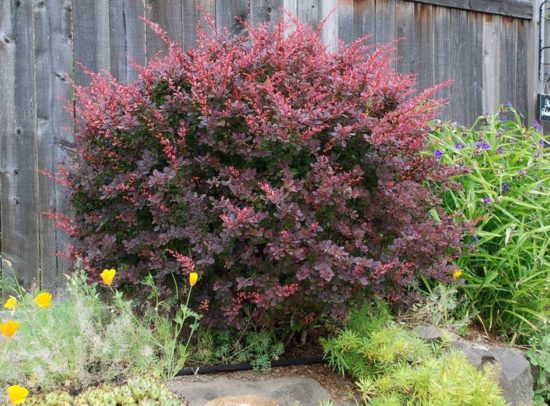
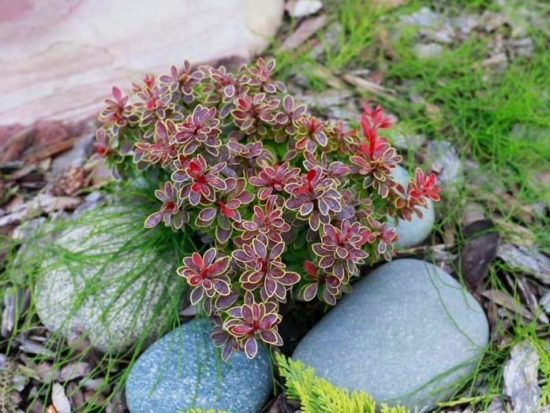
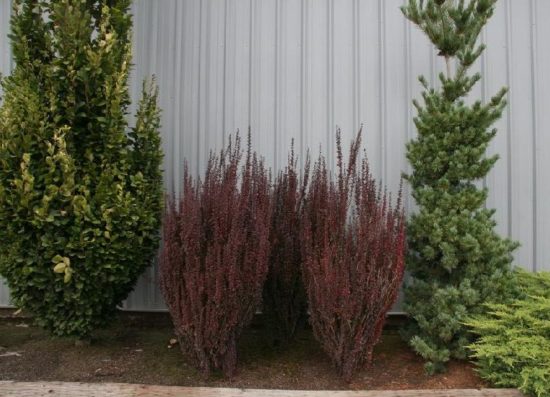

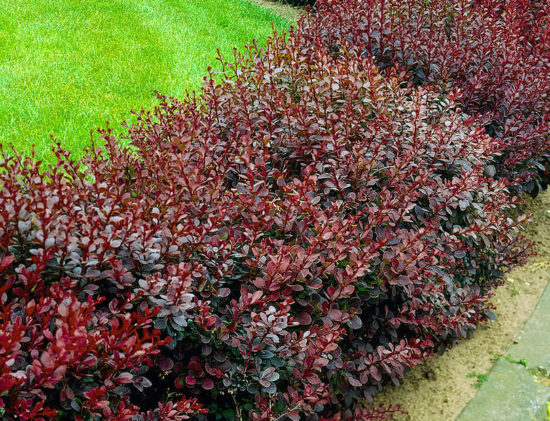
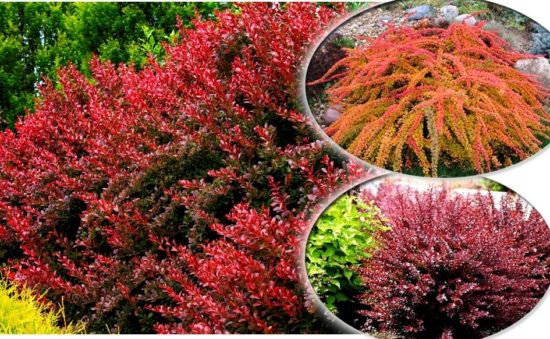
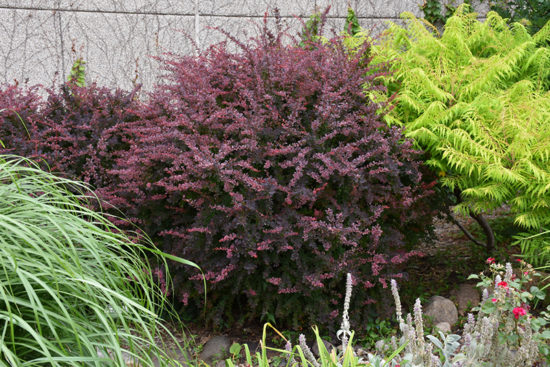

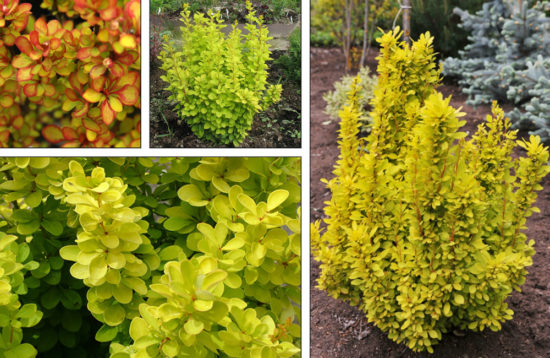
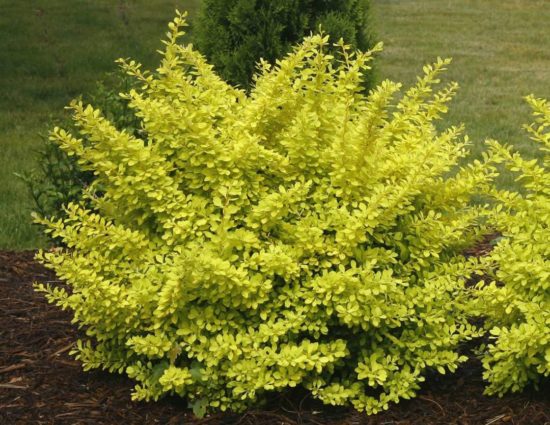
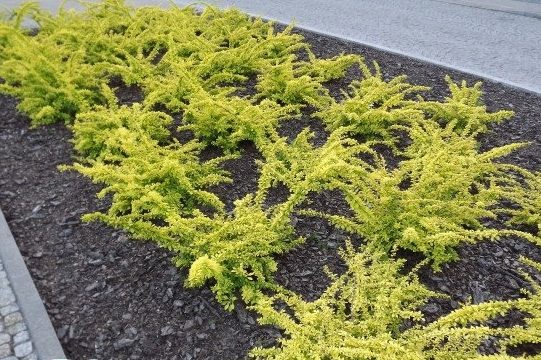
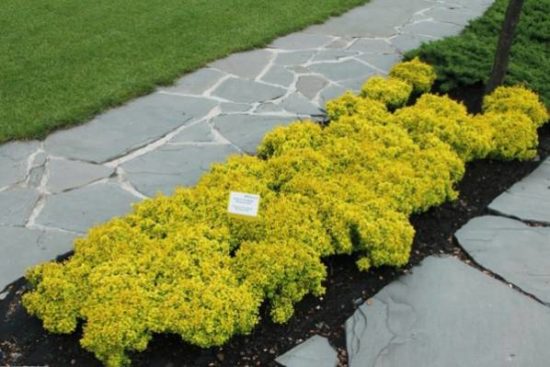
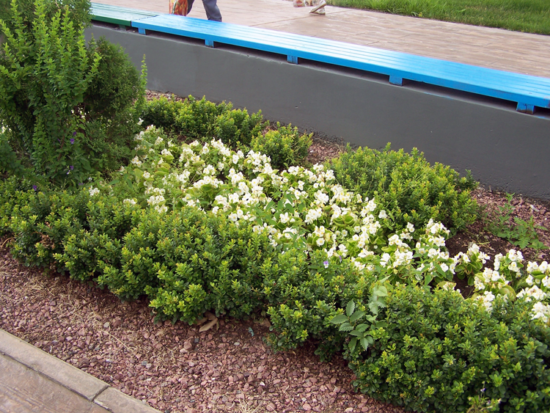
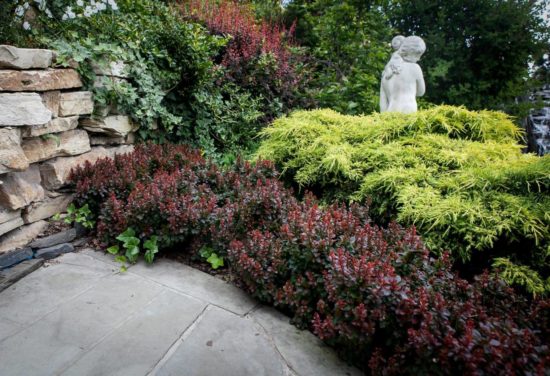
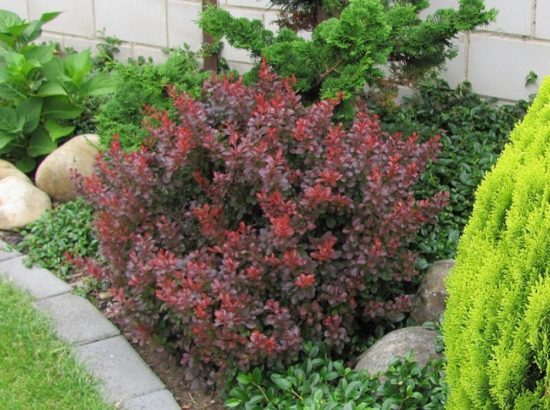

 CUCUMBERS NEVER GET SICK, I'VE BEEN USING ONLY THIS FOR 40 YEARS! I SHARE A SECRET WITH YOU, CUCUMBERS ARE LIKE THE PICTURE!
CUCUMBERS NEVER GET SICK, I'VE BEEN USING ONLY THIS FOR 40 YEARS! I SHARE A SECRET WITH YOU, CUCUMBERS ARE LIKE THE PICTURE! You can dig a bucket of potatoes from each bush. Do you think these are fairy tales? Watch the video
You can dig a bucket of potatoes from each bush. Do you think these are fairy tales? Watch the video
 How our fellow gardeners work in Korea. There is a lot to learn and just fun to watch.
How our fellow gardeners work in Korea. There is a lot to learn and just fun to watch. Eye trainer. The author claims that with daily viewing, vision is restored. They don't charge money for views.
Eye trainer. The author claims that with daily viewing, vision is restored. They don't charge money for views. A 3-ingredient cake recipe in 30 minutes is better than Napoleon. Simple and very tasty.
A 3-ingredient cake recipe in 30 minutes is better than Napoleon. Simple and very tasty. Therapeutic exercises for cervical osteochondrosis. A complete set of exercises.
Therapeutic exercises for cervical osteochondrosis. A complete set of exercises. Which indoor plants match your zodiac sign?
Which indoor plants match your zodiac sign? What about them? Excursion to German dachas.
What about them? Excursion to German dachas.